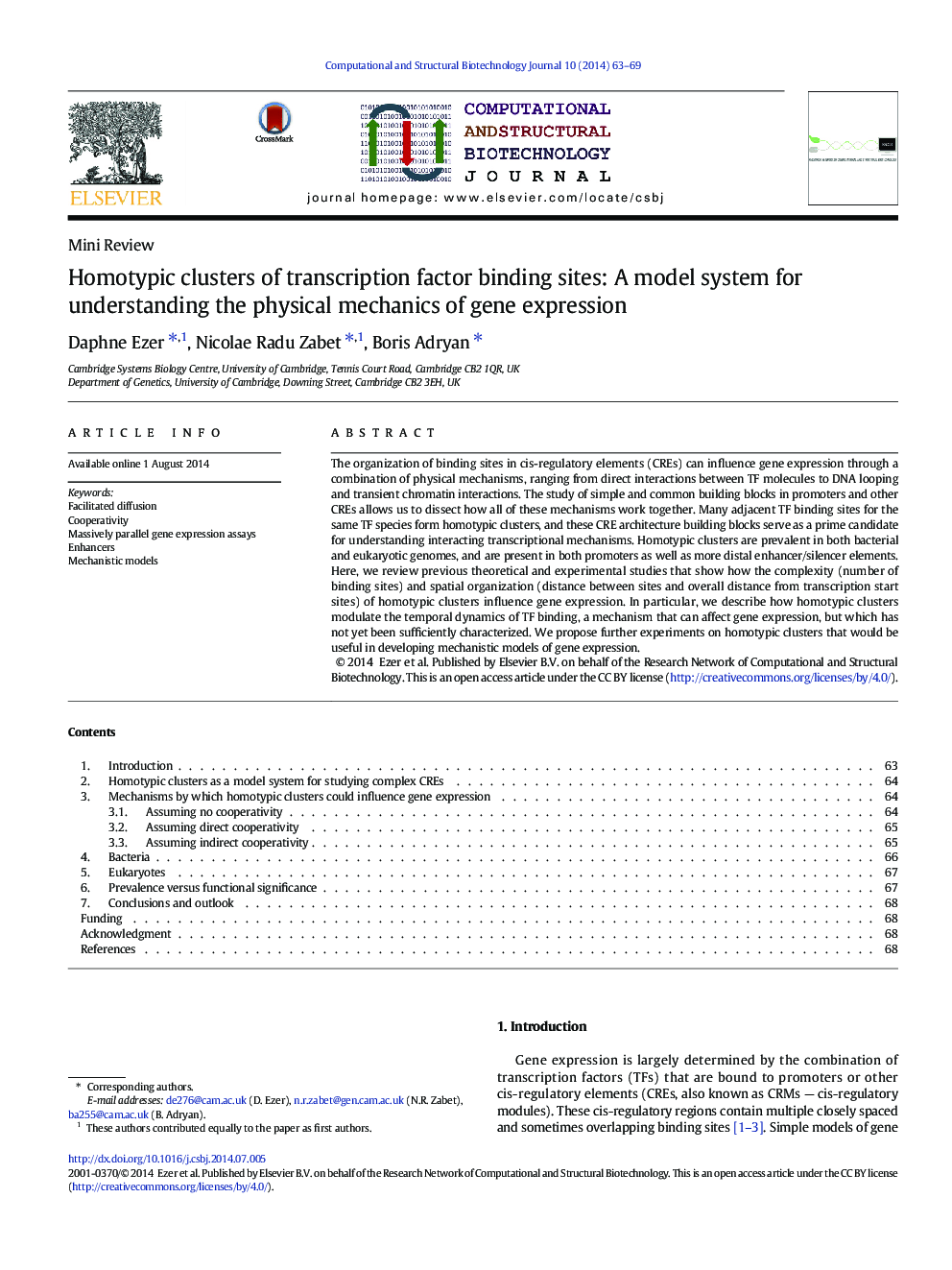| Article ID | Journal | Published Year | Pages | File Type |
|---|---|---|---|---|
| 2079126 | Computational and Structural Biotechnology Journal | 2014 | 7 Pages |
The organization of binding sites in cis-regulatory elements (CREs) can influence gene expression through a combination of physical mechanisms, ranging from direct interactions between TF molecules to DNA looping and transient chromatin interactions. The study of simple and common building blocks in promoters and other CREs allows us to dissect how all of these mechanisms work together. Many adjacent TF binding sites for the same TF species form homotypic clusters, and these CRE architecture building blocks serve as a prime candidate for understanding interacting transcriptional mechanisms. Homotypic clusters are prevalent in both bacterial and eukaryotic genomes, and are present in both promoters as well as more distal enhancer/silencer elements. Here, we review previous theoretical and experimental studies that show how the complexity (number of binding sites) and spatial organization (distance between sites and overall distance from transcription start sites) of homotypic clusters influence gene expression. In particular, we describe how homotypic clusters modulate the temporal dynamics of TF binding, a mechanism that can affect gene expression, but which has not yet been sufficiently characterized. We propose further experiments on homotypic clusters that would be useful in developing mechanistic models of gene expression.
